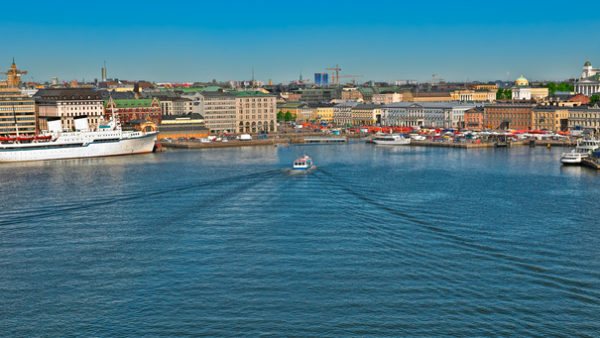Scientists in Germany are developing a floating house that can produce its own water, electricity and heat in a bid to populate a large lake district that is now poorly served by utilities.
They say floating homes are becoming more popular in Germany as holiday homes and as permanent residences, and believe the Lusatian Lake District (Lausitzer Seenland), the largest artificial lake district in Europe, is well suited for the home they are working on.
Located between the states of Saxony and Brandenburg, the former open-coal-mining area has 23 lakes over 32,000 acres. The scientists, from two Fraunhofer institutes and two German universities, say being able to live on the water will enhance the region’s attractiveness and boost its economy.
Their floating, self-sufficient home is intended for Lake Geierswalde, northwest of the city of Hoyerswerda. They say it will be ready by 2017.
"These kinds of energy self-sufficient floating homes do not exist yet," said project coordinator Professor Matthias Klingner of the Fraunhofer Institute for Transportation and Infrastructure Systems (IVI). Many lakes in the Lusatian Lake District are cut off from infrastructure such as water and energy supply. "We want to find a solution for this kind of environment," Klingner said.
State-of-the-art self sufficiency
Standing on a 13-sq-m steel pontoon, the two-level house offers 75 sq m of living space on the ground floor, another 34 sq m on the first floor, with a 15-sq-m terrace overlooking the lake. The house combines modern architecture and structural engineering with state-of-the-art facilities for self-sufficiency.
Solar cells are integrated into the building envelope and lithium polymer batteries store the collected energy. To save space, the battery systems developed at IVI are integrated into the textile concrete walls or into stairs.
Researchers at IVI are also working on the efficient provision of heating and cooling systems. A salt hydrate fireplace provides heat on cold winter days: above the fireplace there is a tub filled with water and salt hydrates.
"When the fireplace is on, the salt hydrates liquefy and begin to absorb heat," said Dr. Burkhard Fassauer of the Fraunhofer Institute for Ceramic Technologies and Systems (IKTS). When the salt hydrates are completely liquefied, the thermal energy can be stored almost indefinitely.
Like a pocket warmer
In order to release the heat when required, radio-based technology is used to induce crystallization. The principle is known from commercial pocket warmers where, to induce crystallization, a metal disc inside is clicked so that the pocket warmer solidifies and gives off heat. When heated in water, the crystals liquefy and the heat is stored until the next click.
However, a fireplace is not enough to heat the house during the winter. This is where a zeolith thermal storage unit in the pontoon will help: the zeolith minerals are dried during the summer – a purely physical process in which heat is stored.
"In winter, the moist air is enough for the storage unit to give off heat," Fassauer said. An adiabatic cooling system provides for cool air in the summer. Unlike conventional air conditioning systems, it does not require electricity but uses the principle of evaporative humidification to cool.
A surface on the side of the house is landscaped and moistened and the process of evaporation then cools the building envelope.
The experts at IKTS are responsible for the water supply in the houseboat. They rely on a combination of ceramic membranes and different electrochemical and photocatalytic processes. Ashore, wastewater is usually treated using biological processes. This is not possible in a floating house.
"We must rely on physical and chemical methods. Thus, ceramics provide very efficient ways to bring together processes like photocatalysis, electrochemistry and filtration in a confined space," said Fassauer.
As well as the two Fraunhofer institutes based in Dresden, the Technical University of Dresden (TUD) and the Technical University of Brandenburg (BTU) are involved, along with companies from the region.
Photograph: Artist’s render of the floating house that provides its own heat and water (Credit: Fraunhofer IVI)
Comments
Comments are closed.











Wonderful concept. Is there any prototype?
Extremely interesting, but I have a home in Brandenburg an der Havel, by the lake where one has to take boats out of the water fro winter when the ground temperature drops to -10C.
Can these cope with those extremes, I’d miss a garden, but have plenty of mooring for the cruiser and dory.
” Ashore, wastewater is usually treated using biological processes. This is not possible in a floating house.”
seems a basic fault to me irrespective of the technological advances, so the lakes aren’t actually well suited for these homes at all, especially if they are in large numbers.
Adiabatic cooling system- reminds me of my teens at school, Physics…
Very clever indeed. I would love to know more about these houses.
How will you deal with sewage?